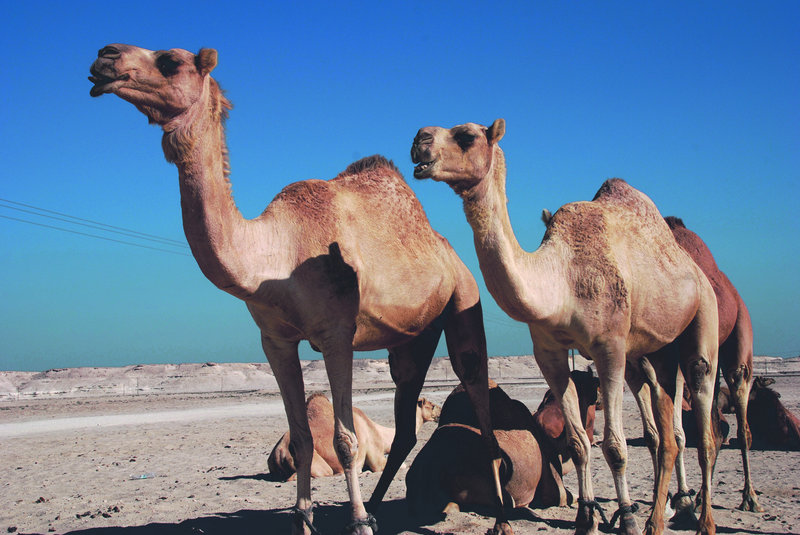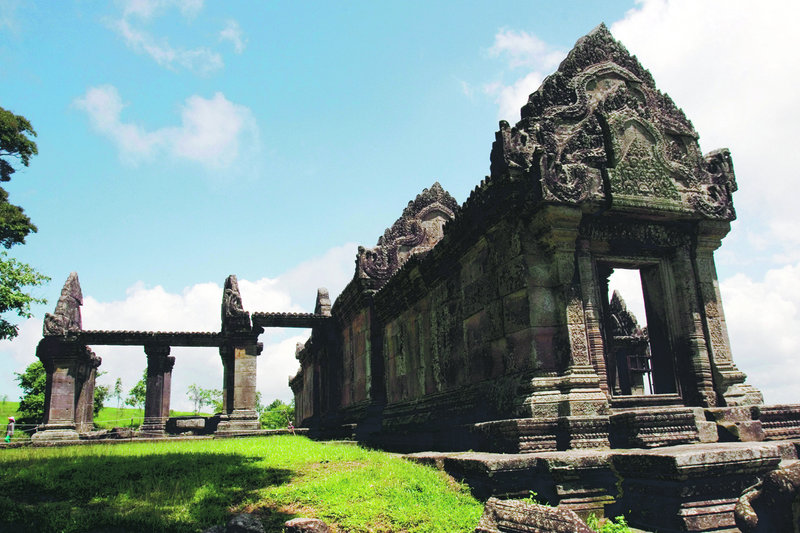1. India’s military buildup
China’s new aircraft carrier — actually just a refitted Gorbachev-era Soviet model purchased for $20 million from the Russians — made international headlines when it began sea trials this year, signaling Beijing’s growing military ambitions in East Asia. But it isn’t the only Asian giant investing heavily in new military hardware. India has kept pace with its neighbor to the north and, in some areas, is actually exceeding it — a development that, though much less noted, is a sign of the growing militarization of the region as a new generation of emerging powers with global ambitions jockeys for regional supremacy.
India is now the world’s largest weapons importer, according to a 2011 report by arms watchdog SIPRI, accounting for 9 percent of the world’s international arms transfers — most from Russia — between 2006 and 2010. India will spend an estimated $80 billion on military modernization programs by 2015, according to an estimate from the Washington-based Center for Strategic and International Studies.
In particular, India is focusing on sea power, a crucial new area of competition. The country is planning to spend almost $45 billion over the next 20 years on 103 new warships, including destroyers and nuclear submarines. By comparison, China’s investment over the same period is projected to be about $25 billion for 135 vessels, according to data on both countries from maritime analysis firm AMI International.
On top of long-running tensions with Pakistan and festering insurgencies by Kashmiri separatists and Maoist rebels, India’s military planners are increasingly concerned about the prospect of military hostilities with China — hence the new focus on naval power. For now, the United States seems much more comfortable with India’s military ambitions than China’s. The Pentagon’s 2010 Quadrennial Defense Review welcomed “a more influential role in global affairs” for India, including in the Indian Ocean region. But there are some troubling signs that the area might not be big enough for two rising superpowers.
In August, an unidentified Chinese warship confronted an Indian amphibious assault ship near the coast of Vietnam and demanded that it explain its presence in Chinese waters (the encounter took place in a disputed part of the South China Sea claimed by Vietnam). Thankfully, the situation resulted in nothing more than some testy public statements from officials in all three countries, but it was yet another sign of an increasingly militarized Asian seascape.
2. ‘New Europe’ falls out of love with the euro
For all the talk of Greeks and Italians seriously entertaining the thought of dumping Europe’s common currency in exchange for good old drachmas and lira, the more troubling indicator for the decade-old euro may be all the Eastern European countries that have pushed for years to be part of the monetary union but are now having second thoughts.
On Jan. 1, Estonia became the 17th country to adopt the euro, but it might be a while before it has company. Poland was due to join the eurozone in 2012, but that goal has been indefinitely postponed. (“If you base a monetary union on aspirations and being pro-European, you may have problems in 10 years,” Jan Filip Stanilko, a Polish analyst, told cnbc.com.) In April, Bulgaria’s center-right government pushed back a plan to join in 2013, citing the need for more preparation. Romania’s president also suggested its 2015 target date could be pushed back by “one or two years.” Latvia and Lithuania had been keen to follow Estonia into the eurozone as well, but both now say their current target dates are unrealistic, and Lithuania’s central bank chief has cautioned that membership is “not a must-have-or-die thing.”
Only two years ago, eurozone membership was being touted as a solution to Eastern Europe’s debt worries. A leaked IMF report even recommended that the process be accelerated, arguing that “euroisation” would not only help with the debt problem but also mean “removing uncertainty and restoring confidence.”
But these countries now worry about the straitjacket that being in a currency union has put on troubled European economies as they push to recover.
The shift in opinion in what former U.S. Defense Secretary Donald Rumsfeld once defined as new Europe, where countries have long yearned for European integration, has been as rapid as it’s surprising. Membership in the EU club isn’t what it used to be.
3. Mexico’s drug war moves south
While the drug violence near Mexico’s northern border has become a major political issue in the United States, less noticed has been the disastrous effect the conflict is having on countries to the south. Drug mafias such as the Sinaloa and Zetas cartels, in search of new territory and looking to escape the Mexican government’s crackdown, are increasingly setting up shop in the politically fragile states of Central America.
With the addition of Belize and El Salvador this year, all seven countries in Central America are now on the White House’s list of major drug-trafficking states. Sixty percent of the cocaine that enters the United States through Mexico first travels through Central America, according to a Congressional Research Service report. Homicide rates in four of the seven countries have increased significantly in the last five years — in Honduras, they’ve more than doubled.
In May, Guatemala saw its worst massacre since the 1996 end of its civil war, when 27 people were decapitated by drug gangs in the country’s north. Entire regions are now effectively under the control of the Zetas, Mexico’s second-largest drug cartel, which has access to machine guns and rocket-propelled grenades and has even built its own airstrips in the jungle. The Guatemalan government launched a major military offensive against the Mexican cartels in the first few months of this year, but failed to expel them. There are widespread reports that a number of Guatemalan politicians are receiving kickbacks from the gangs or otherwise tied up in cartel activity.
Until now, the cocaine itself has been processed almost exclusively where coca is grown in the Andean region of South America. But in March, the first cocaine-processing lab ever discovered in Central America was found in Honduras. In El Salvador, which has also seen its crime rate skyrocket, Sinaloa and the Zetas are believed to have established alliances with local gangs such as the infamous Mara Salvatrucha.
This isn’t just Mexico’s drug war anymore.
4. Peak camel?
Shortly before his death in 1960, English explorer and Arabist St. John Philby predicted that the camel would disappear from Arabia within 30 years. At the time, he was laughed at, but today, ultramodern Saudi Arabia is increasingly relying on camel imports, a shift that has had the largely overlooked effect of putting a strain on herds around the world.
The stock of meat-producing camels in the kingdom decreased from a high of 426,000 in 1997 to just 260,000 today, a drop of 39 percent, according to the U.N. Food and Agriculture Organization. Thousands of camels are slaughtered every year during the hajj pilgrimage — hence the need for imports.
But where to get them? The animals were once as common as squirrels in Pakistan, but the country’s camel population is now down to about 700,000 thanks largely to demand from the camel-racing industry in Saudi Arabia and the Gulf states. Overall, the Asian camel population decreased nearly 20 percent between 1994 and 2004.
The biggest winner has been Australia, which boasts the world’s largest remaining population of wild camels — descendants of the animals brought by British settlers from India in the 19th century — and has profited from the demand by shipping the animals to Saudi Arabia to be slaughtered for food.
In famine-plagued Somalia, there has been a reported mass die-off of camels — a source of transportation, livelihood, and sustenance for many families. Some tribesmen report losing more than half of their herds. In previous famines in Africa, camels have been considered an early-warning system for human deaths.
5. The U.S. immigration crackdown
As the 2012 Republican presidential candidates fight it out over who would best secure the U.S.-Mexico border, and blast states for providing services to illegal immigrants, the White House has been quietly waging the toughest-ever campaign on undocumented immigrants. Despite U.S. President Barack Obama’s pledge to pass comprehensive immigration reform — a goal repeatedly stymied in Congress — deportations have reached all-time highs.
A record 392,000 undocumented aliens were deported in fiscal 2010, and this past fiscal year that number was nearly 400,000. As of October, almost 1.2 million people had been deported under the Obama administration, compared with about 1.5 million over the eight years of George W. Bush’s presidency. The administration has also been cracking down on the employers of illegal immigrants. Twice as many businesses were investigated in the first year of the Obama administration as in the last year of Bush’s term.
In August, under pressure from Hispanic groups, the administration announced new guidelines under which pending deportations will be reviewed and those who pose no threat to public safety and haven’t flagrantly violated laws will have their cases deferred. (These constitute about 50 percent of recent deportations, according to Secretary of Homeland Security Janet Napolitano.) The guidelines, however, still allow significant “prosecutorial discretion” to immigration officials to determine which immigrants are dangerous.
The administration’s strategy may have been to shore up Obama’s right flank before undertaking a sweeping overhaul of immigration law. But with progress on an immigration bill in Congress looking unlikely anytime soon, for now it’s more stick than carrot.
6. Pakistan’s other war
Baluchistan may be Pakistan’s largest province, covering nearly half the country’s land area, but the raging separatist violence in the region — sometimes called Pakistan’s secret war — gets only a fraction of the attention that the country’s other crises receive. Separatist groups, the largest of which is the Baluchistan Liberation Army, have been waging an insurgency since 2007 in the resource-rich province, which borders Iran and Afghanistan. It’s the fifth Baluchi uprising since Pakistan’s independence in 1947, and even by the country’s standards, the province appears increasingly out of control.
Baluchistan saw the highest number of militant attacks of any Pakistani province in 2010, and the trend has continued in 2011, with multiple bombings of key gas pipelines, the murder of Punjab settlers who have moved to the region, and the assassinations of several prominent politicians and oil-company employees.
The Pakistani state’s response has also been brutal. A Human Rights Watch report documented the killings of 150 people between January and June — mostly young men active in Baluchi separatist politics — in “kill and dump” operations that were likely carried out by Pakistani security forces. Brad Adams, Human Rights Watch’s Asia director, described the crackdown as an “abusive free-for-all” that calls into question the Pakistani government’s “willingness or ability to control the military and intelligence agencies.”
Baluchistan’s instability has international consequences. The Taliban, headquartered in the provincial capital of Quetta, use Baluchistan’s 800-mile-long border to slip in and out of Afghanistan. The sparsely populated region also provides safe haven for drug smugglers and Iranian rebel groups.
The CIA is believed to launch drone strikes from bases in Baluchistan. And then, of course, there’s India, which Pakistan has repeatedly accused of funding the rebels, a charge India vehemently denies.
The mastermind of the 9/11 attacks, Khalid Sheikh Mohammed, is an ethnic Baluchi, as is his nephew Ramzi Yousef, who plotted the 1993 World Trade Center bombing.
7. Piracy goes global
Somalia’s pirates are on pace for another record year in 2011, with 199 attacks as of October versus 126 over the same period in 2010. And unfortunately, modern piracy, thought to have been successfully contained elsewhere in recent years, is not a phenomenon confined to Somali privateers in the Gulf of Aden. Global piracy is back in a big way.
The hottest new zone for pirates is West Africa, whose oil-rich Gulf of Guinea has seen a spike in attacks this year. Nineteen attacks were reported off the coast of Benin in 2011, after none in 2010. There were also six off the Nigerian coast and three off the coast of Ghana. Many more likely go unreported. In October, the presidents of Nigeria and Benin held the region’s first-ever head-of-state summit devoted to piracy.
West African pirates are a bit more traditional than their Somali counterparts — they tend to go after a ship’s cargo rather than kidnapping for ransom money. Sailors have been tied up, beaten with rifle butts, and whipped with electrical cables. In some cases, entire crews have been shot. Whereas Somalia’s piracy is often seen as a function of the country’s on-land instability, the same can hardly be said of Ghana, one of Africa’s most stable and peaceful democracies, with a projected growth rate of 13.5 percent in 2011. It’s thought that the region’s oil boom is proving a draw for modern-day pirates.
And it’s not just Africa. Indonesia’s International Chamber of Commerce reported this year that pirate attacks are at their highest level since 2007. Even Peru, where piracy is virtually unheard of, saw an attack this year on a Japanese fishing trawler by a gang of criminals calling itself the “pirates of the sea.” Overall, the first nine months of this year saw 352 attacks — a record level.
8. Asia’s new DMZ
While the world was transfixed by events in the Middle East this February, a century-old territorial conflict in Southeast Asia briefly became a shooting war when Cambodia and Thailand came to blows over a long-disputed religious site, a clash that may foreshadow growing instability in an increasingly volatile region.
The two neighbors have long argued over ownership of the 11th-century Preah Vihear Temple, a UNESCO World Heritage site, in a quarrel dating back to the drawing of the border between Siam and then-French Cambodia in the early 20th century. In 1962, the U.N.’s International Court of Justice awarded ownership of the temple — originally Hindu, now Buddhist — to Cambodia, but Thailand has never completely accepted the judgment. In recent years, Abhisit Vejjajiva, who was prime minister from 2008 until last August, upped his aggressive rhetoric under pressure from the Thai nationalist “Yellow Shirt” movement and sent troops into the region.
From Feb. 4-16, the two sides continually exchanged artillery fire in the disputed area — each country claims the other started it — with as many as 28 people killed and thousands of civilians displaced. “This is a real war. It is not a clash,” proclaimed Cambodian Prime Minister Hun Sen.
Thankfully, if it was a war, it was a very short and limited one. In July, the United Nations imposed a demilitarized zone around the temple and ordered both countries to withdraw their forces. The truce is being monitored by Indonesian observers, but some argue that Southeast Asia’s regional body — ASEAN — needs its own peacekeeping force. Tensions have eased somewhat since Abhisit was voted out of office in favor of “Red Shirt”-backed Yingluck Shinawatra.
Although the crisis seems to have abated for now, it’s just one episode of a period of intense political turmoil for Thailand, a key U.S. ally in counterterrorism and counternarcotics campaigns. The country has seen large-scale and often violent demonstrations by the largely rural Red Shirts and the royalist Yellow Shirts, and is facing an insurgency in the south by Islamist militants who were accused by Amnesty International this year of perpetrating war crimes against civilians. The possible return of Yingluck’s brother Thaksin, the exiled former prime minister and business tycoon who is still wanted on corruption charges in his home country, is another potential flashpoint.
Copy the Story Link
Send questions/comments to the editors.






Success. Please wait for the page to reload. If the page does not reload within 5 seconds, please refresh the page.
Enter your email and password to access comments.
Hi, to comment on stories you must . This profile is in addition to your subscription and website login.
Already have a commenting profile? .
Invalid username/password.
Please check your email to confirm and complete your registration.
Only subscribers are eligible to post comments. Please subscribe or login first for digital access. Here’s why.
Use the form below to reset your password. When you've submitted your account email, we will send an email with a reset code.